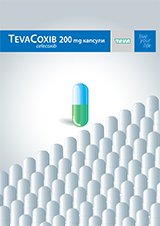Biotechnological Equipment
Advanced search
Article
Biotechnology & Biotechnological Equipment 27 (3), 3843 - 3847 (2013)
http://dx.doi.org/10.5504/bbeq.2012.0144
MEDICAL BIOTECHNOLOGY
LYMPHOCYTE Cu/Zn AND Mn SOD GENE EXPRESSION RESPONSES TO INTENSIVE ENDURANCE SOCCER TRAINING
Ana Vujovic, Vesna Spasojevic-Kalimanovska, Natasa Bogavac-Stanojevic, Jelena Kotur-Stevuljevic, Miron Sopic, Aleksandra Stefanovic, Ivana Baralic, Brizita Djordjevic, Zorana Jelic-Ivanovic, Slavica Spasic
University of Belgrade, Faculty of Pharmacy, Belgrade, Serbia
Abstract
The purpose of the present study was to examine the effect of physical training on the gene expression levels of Cu/Zn superoxide dismutase (Cu/Zn SOD) and Mn superoxide dismutase (Mn SOD) in young soccer players at the beginning of their professional careers. The non-trained young men underwent a professional soccer training program of 12 weeks.
Blood was obtained at two time points: before and after the 12-week endurance soccer training. Plasmatic superoxide dismutase (SOD) activity, concentration of sulfhydryl (SH) groups, superoxide anion (O2.-), malondialdehyde (MDA), and advanced oxidation protein product (AOPP) were determined. Messenger RNA (mRNA) relative levels of SOD isoenzymes were measured in peripheral blood mononuclear cells by Real-time PCR.
After 12-week training, the soccer group experienced a significant decrease in plasmatic SOD activity and increase of O2.-concentration. Concentration of SH groups, MDA and AOPP were not affected by physical training, although they showed a trend to increase. Cu/Zn SOD mRNA expression levels were stable during the endurance training period but Mn SOD mRNA levels were significantly higher after the training period. The variation in Mn SOD mRNA levels was dependent on MDA concentration. Negative prediction of MDA concentration on Mn SOD mRNA expression levels remained significant after inclusion of all the other oxidative stress status parameters in a multiple regression model (p = 0.017). Positive prediction of Cu/Zn SOD mRNA levels on plasmatic SOD activity remained significant after inclusion of MDA, log O2.- and AOPP concentrations in a multiple regression model (p = 0.025).
Intensive endurance soccer training stimulated a beneficial increase in lymphocyte Mn SOD rather than in Cu/Zn SOD mRNA expression levels. An interaction between the oxidative stress/antioxidative defence status parameters in blood and gene expression levels of Cu/Zn SOD and Mn SOD in PBMCs was also observed.
Keywords
gene expression, Cu/Zn SOD, Mn SOD, soccer training, oxidative stress


